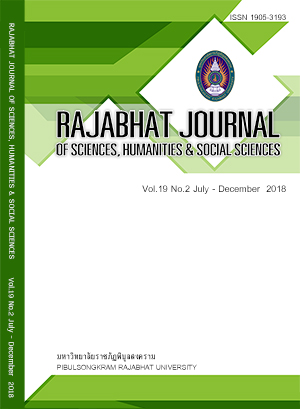PREVALENCE AND ND1 IDENTIFICATION OF TREMATODE, Echinostoma revolutum IN METACERCARIA AND ADULT STAGES FROM LAMPHUN AND LAMPANG PROVINCES, THAILAND
Keywords:
Filopaludina snails, Echinostoma revolutum, Lamphun, Lampang, mitochondrial geneAbstract
Echinostome metacercariae are the infective stage of echinostome flukes that can be found in fresh water snails, tadpoles, and fish. In this study, echinostome metacercariae from three species of Filopaludina snails; Filopaludina martensi martensi, F. dorliaris and F. summatrensis polygramma were collected from four districts of Lamphun and Lampang Provinces and the prevalence of metacercrial infection by the three species was 27.05%, 41.92% and 48.05% respectively. The adult flukes were covered from experimentally infected hamsters and chickens at the 14th day after infection and were identified to species using light microscopy (LM), scanning electron microscopy (SEM), and a phylogenetic tree for the mitochondrial gene ND1 (nicotinamide adenine dinucleotide dehydrogenase subunit 1). This fluke has an elongated body, entrally curved body , head collar with 37 prominent collar spines, and 2 type of testes shape including lobed and roudned. However, identification of Echinostoma revolutumin this present study has been based on morphology, morphometric data, and the phylogenetic tree from ND1 subunit The results confirmed status of E. revolutum in Filopaludina spp. snails as the natural second intermediate host and also demonstrated the occurrence of this intestinal flukes in Lamphun and Lampang provinces.
References
Chantima K, Chai JK, Wongsawad C. Echinostoma revolutum freshwater snails as the second intermediate hosts in Chiang Mai, Thailand, The Korean Journal of Parasitology. 2013: 183-189.
Chantima K. Epidemiology, Life History and Molecular Identification of Trematodes, Echinostoma spp. In Chiang Mai province.Doctor of Philosophy in Biology and Ethnobiology, Faculty of Science, Chiang Mai University, 2014.
Chai JY. Echinostomes in humans. In Fried B, Toledo R eds. The biology of Echinostomes from the molecule to the community. New York, USA: Springer Science Business Media LLC, 2009.
Chai JY, Sohn WM, Na BK. et al. Echinostoma revolutum metacercariae in Filopaludina snails from Nam Dinh Province, Vietnam, and adults from experimental hamsters, The Korean Journal of Parasitology.2011; 49(4): 449-455.
Chai JY, Sohn WM, Yong TS. et al. Echinostome flukes receovered from humans in Khammouane Province, Lao PDR, The Korean Journal of Parasitology. 2012; 50(3): 269-272.
Georgieva S, Faltynkova A, Brown R. et al. Echinostoma 'revolutum' (Digenea: Echinostomatidae) species complex revisited: species delimitation based on novel molecular and morphological data gathered in Europe, Parasite and vectors. 2014; 7: 520.
Khanna V, Tilak K, Mukim Y, Khanna R. An unusual case of Echinostomiasis in a retropositive patient: A case report, Human Parasitic Diseases. 2016; 8: 43–45.
Lee SK, Chung NS, Lo IH.et al.Two case of human infection by Echinostoma hortense,The Korean Journal of Parasitology.1986; 24(1): 77-81.
LeeKJ, Bae YT, Kim DH.et al. Status of intestinal parasites infection among primary school children in Kampongcham, Cambodia, The Korean Journal of Parasitology. 2002; 40(3): 153-155.
Margolis L, Esch GW, Holmes JC. et al. The use of ecological terms in parasitology (report of an ad hoc committee of the American society of parasitologists), Journal of Parasitology. 1982; 68(1): 131–133.
Morgan JAT, Blair D. Relative merits of nuclear ribosomal internal transcribed spacers and mitochondrial CO1 and ND1 genes for distinguishing among Echinostoma species (Trematoda). Parasitology. 1998; 116(3): 289-297.
Morgan JA, Blair D. Mitochondrial ND1 gene sequences used to identify echinostome isolates from Australia and New Zealand. 1998; 28(3): 493-502.
Nagataki M, Tantrawatpan C, Agatsuma T. et al. Mitochondrial DNA sequences of 37 collar-spinedechinostomes (Digenea: Echinostomatidae) in Thailand and Lao PDR reveals presence of two species: Echinostoma revolutum and E. miyagawai, Infection, Genetics and Evolution. 2015; 35: 56–62.
Noikong W, Wongsawad C. Epidemiology and molecular genotyping of echinostome metacercariae in Filopaludina snails in Lamphun Province, Thailand, Asian Pacific Journal of Tropical Medicine. 2014; 7(1): 26-29.
Noikong W, Wongsawad C, Chai JY. et al. Molecular analysis of Echinostome metacercariae from their second intermediate host found in a localised geographic region reveals genetic heterogeneity and possible cryptic speciation, PLOS Neglected Tropical Diseases. 2014; 8(4): 1-7.
Park SK, Kim DH, Deung YK. et al. Status of intestinal parasite infections among children in Bat Dambang, Cambodia,The Korean Journal of Parasitology. 2004; 42(4): 201-203.
Saijuntha W, Sithithaworn P, Duenngai K. et al. Genetic variation and relationships of four species of medically important echinostomes (Trematoda: Echinostomatidae) in South-East Asia, Infection Genetics and Evolution. 2011; 11: 375–381.
Sohn WM, Kim HJ, Yong TS. et al. Echinostoma ilocanum infection in Oddar Meanchey province, Cambodia, The Korean Journal of Parasitology. 2012; 49(2): 187-190.
Downloads
Published
How to Cite
Issue
Section
License
Each article is copyrighted © by its author(s) and is published under license from the author(s).









